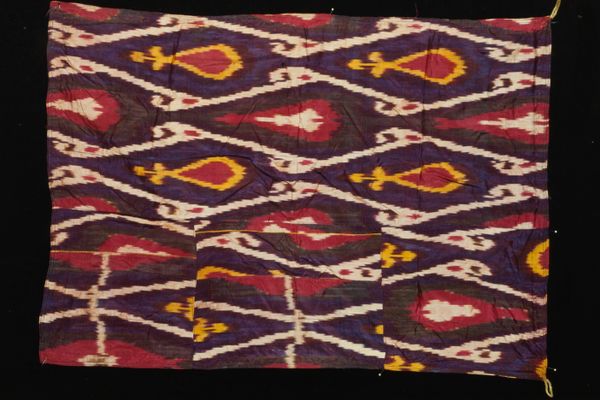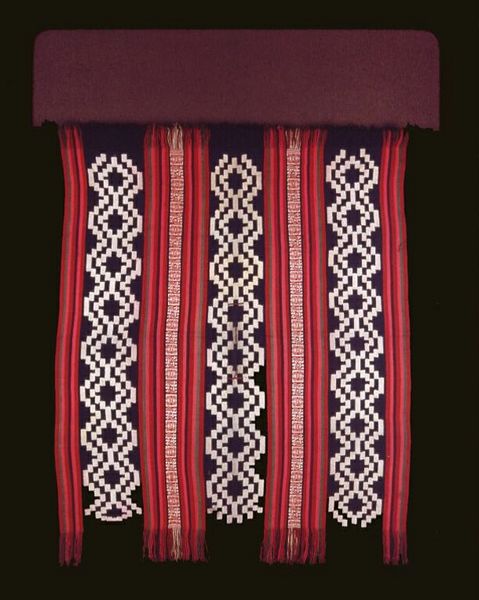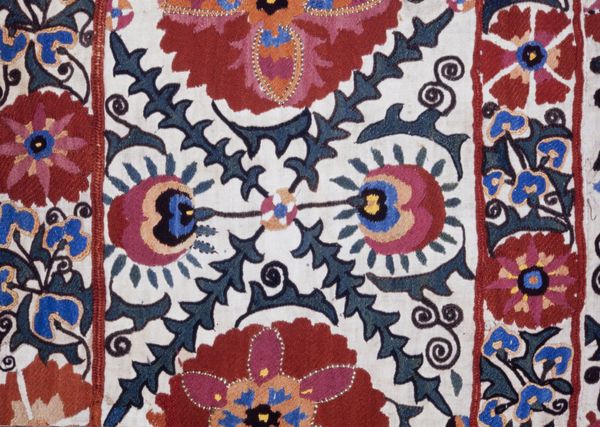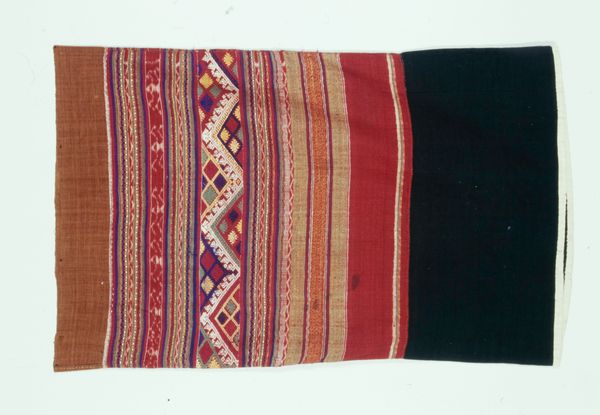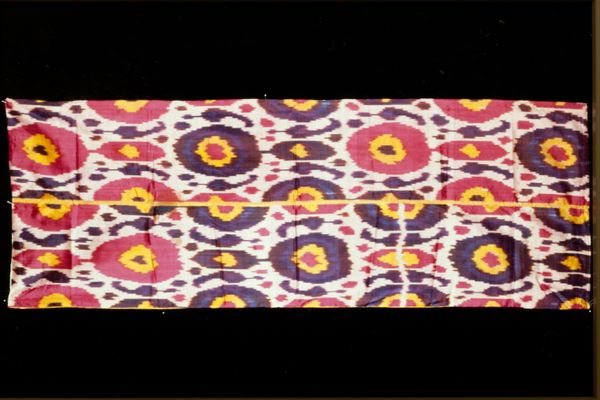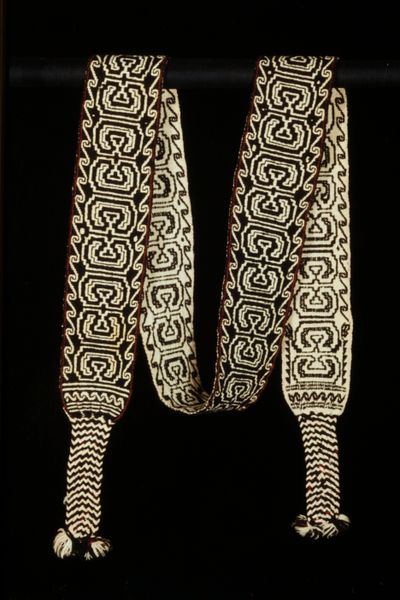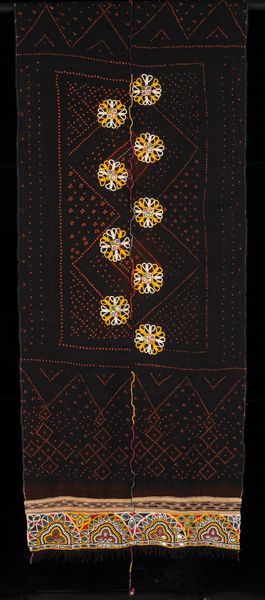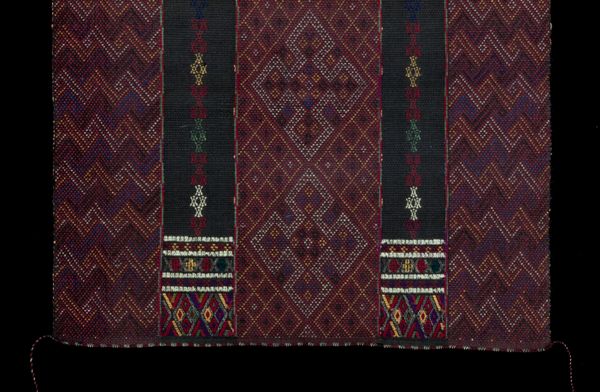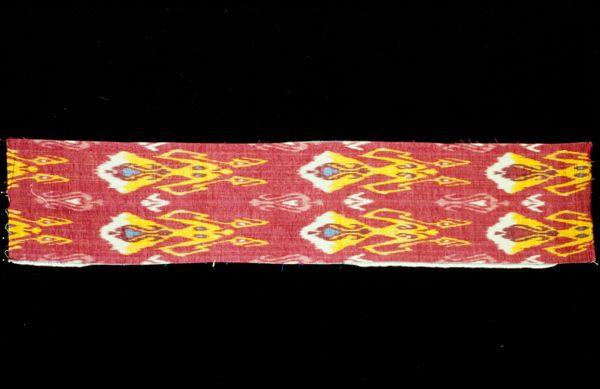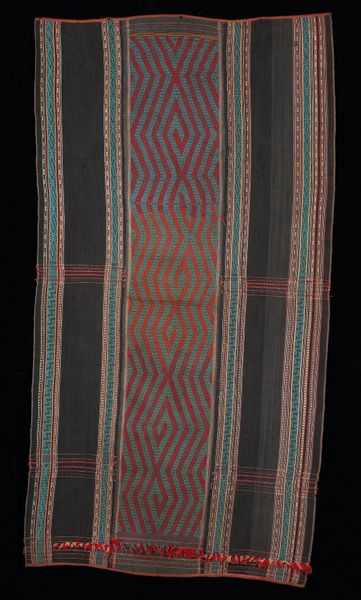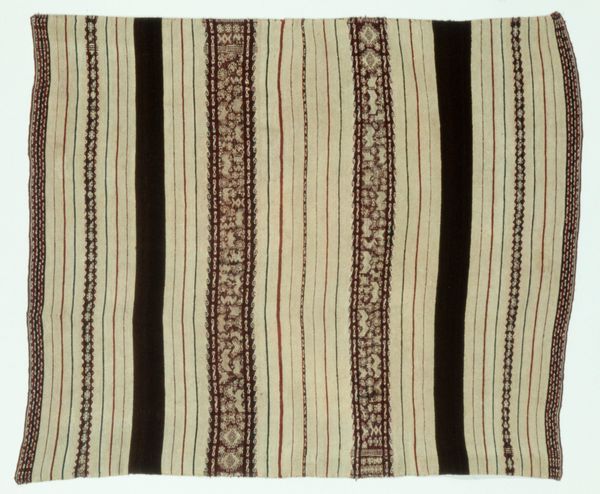
silk, textile
#
pattern heavy
#
silk
#
textile
#
geometric pattern
#
abstract pattern
#
organic pattern
#
repetition of pattern
#
pattern repetition
#
layered pattern
#
funky pattern
#
combined pattern
#
repetitive pattern
Copyright: Public Domain
Curator: The colors are so vibrant. Immediately, I see festivals, rituals… a world far removed from the austerity I often associate with 19th-century textiles. Editor: Yes, there is such joy and vibrancy in this anonymous Textile fragment. Crafted between 1860 and 1880, now housed here at the Minneapolis Institute of Art, it offers a fascinating insight into the complex cultural and production contexts of silk textiles at this time. Curator: That date raises questions about trade routes, colonial influences, the roles of women... I can imagine it adorning a powerful figure. Or perhaps it played a part in spiritual ceremonies? The combination of abstract and geometric forms is suggestive, don't you think? Editor: Definitely, the interplay of these patterns makes the manufacturing process all the more intriguing. How were these complex designs realized? What technologies were used, and what skills were valued in the makers of these textiles? The patterns could very well carry cultural meaning, but understanding the labour behind these forms opens another dimension to appreciating the work. Curator: Indeed, the human labor is undeniably there—each weave, each choice of dye carries intent, purpose. But what's compelling is the symbolism. We're not merely looking at repetitive design. These abstracted patterns suggest stories and shared cultural knowledge. Editor: While agreeing there's storytelling inherent, I'm more focused on understanding its journey as a material object. I find myself thinking about the workers who extracted, spun, dyed the silk – the material's transformations along the chain of production. I believe the social conditions of its creation is integral to truly knowing the fragment. Curator: So true. I can't help but wonder about the narratives it holds within its fibres, the connections woven into its making. By situating this textile fragment within an intersectional framework, we can uncover silenced voices, explore issues of class, challenge Eurocentric biases in art history. Editor: Exactly! Recognizing that textiles have long been at the center of global exchange allows us to reconsider standard art historical narratives that so frequently overlook labor, class and processes of industrialisation. Curator: Thinking about both the socio-political framework as well as its manufacturing provides such a powerful perspective. Thank you for broadening my interpretation! Editor: And likewise! Considering your focus on social justice contextualizes the material realities, I’m thankful for a wider vision now.
Comments
No comments
Be the first to comment and join the conversation on the ultimate creative platform.
